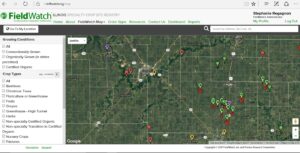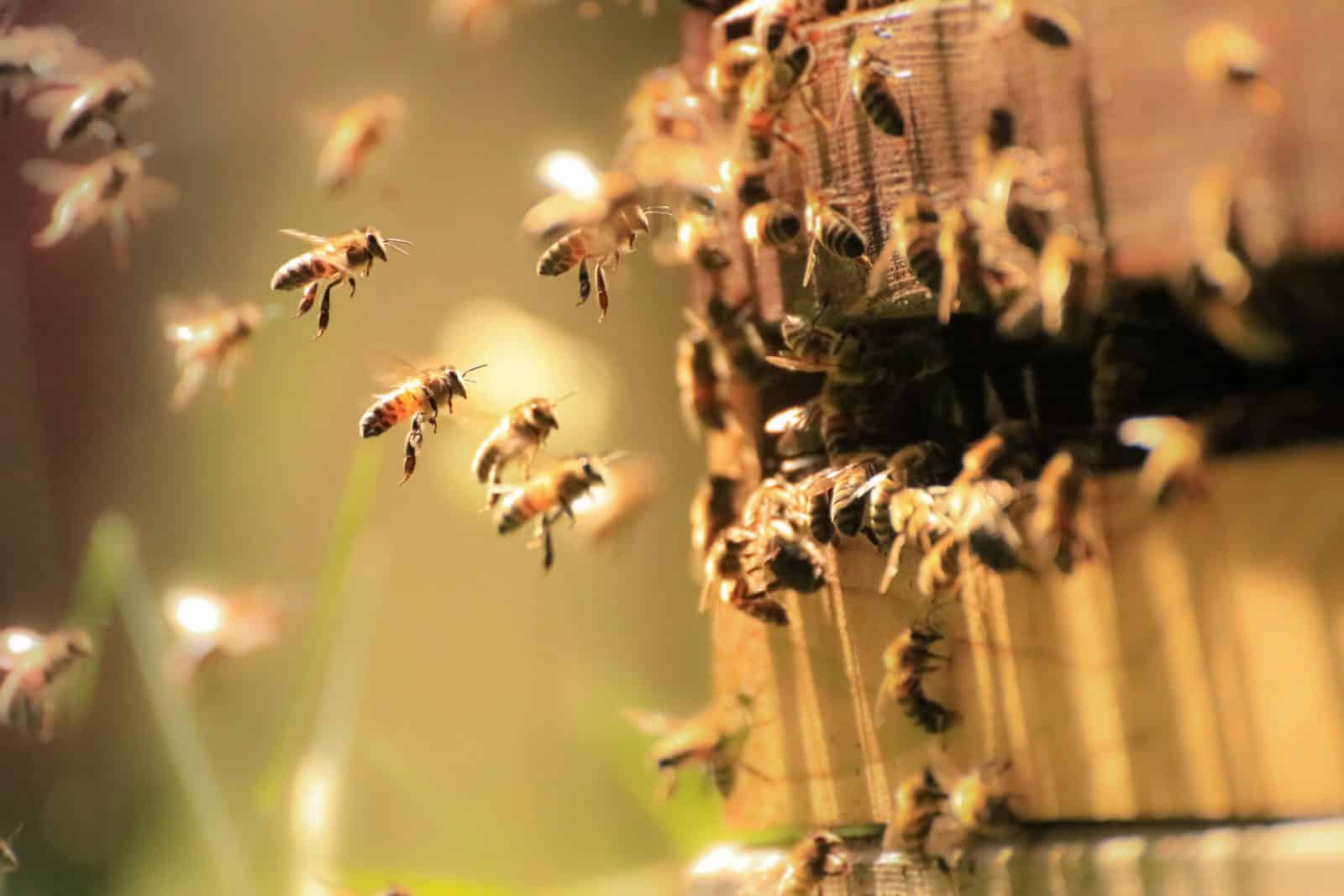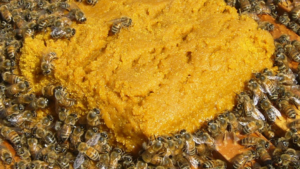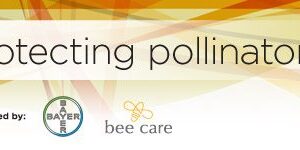Just as worker bees provide the hive with the substance it needs to thrive, states work to create pollinator habitat and increase awareness for an overall bigger impact in protecting pollinators.
When the Environmental Protection Agency called for individual states to develop pollinator protection plans and best management practices for pesticide risk management, states stepped up. Many created task forces, bringing stakeholders from all sides of the issue together.
“These groups have worked on everything from habitat creation at the state level and with private landowners to getting the word out and increasing overall pollinator awareness,” says Dave Flakne, Syngenta senior director of state affairs.
Farmers, beekeepers, pesticide applicators and other agricultural agencies have all contributed to the leadership teams, as plans have been put in place.
“Many of these pollinator protection plans are primarily communication and education plans,” says Flakne, who has been involved in state pollinator programs for many years. “We want to ensure we have good trust and communication to minimize any potential risk.”
Andy Whittington, Mississippi Farm Bureau Federation environment programs coordinator, says all 50 states now have programs in place, or at least in development, and that each state has set its own priorities.
“A lot of these programs look really different, which is good,” Whittington says. “They all have different needs, depending on whether their focus is more on contract pollinator services or honey production.”
In North Carolina, Patrick Jones, who serves as the Department of Agriculture’s deputy director for the Pesticide Division, says their efforts have largely been focused on increasing awareness.
“States are given freedom to set their programs up however they see best, and some states have created best management practices for specific crops,” Jones says. “We have included a number of those (for apples, soybeans and cotton) in the educational brochures we’ve developed.”
For Whittington in Mississippi, the priority is on fostering communication between beekeepers and farmers.
“We started by facilitating a discussion between the beekeepers and the farmers, and then brought in other organizations to expand that discussion,” he says.
Mississippi does not use a bee registry, because the keepers didn’t want to disclose their hive locations, due to competition reasons for farm locations.
“Our keepers prefer to work with farmers individually, so we focus on discussing pollinator health and awareness at our soybean groups, and other agricultural meetings,” he says. “We are encouraging them to communicate throughout the season.”
These educational efforts have been well-received.
“Knowing where the bees are is an important step,” Whittington says. “We’ve distributed more than 2,000 bee flags throughout the state, and our farmers have been willing to consider making any necessary pesticide applications when the bees are less active in the morning or late in the afternoon.”
FieldWatch
FieldWatch is a non-profit company that provides easy-to-use and reliable mapping tools to increase communication and awareness between producers of specialty crops, beekeepers and pesticide applicators.

“States reach out to us, often as part of their managed pollinator plans process, to improve the communication between beekeepers and pesticide applicators. Beekeepers and crop growers put their information into the system and it’s then available when an applicator is making plans to apply pesticides,” says Stephanie Regagnon, CEO of FieldWatch, Inc.
“We focus on the end user, the pesticide applicator, because we need them to know this data is available to them, so they can make informed decisions,” Regagnon says.
FieldWatch is in its tenth year of operation, and now connects beekeepers and applicators in 19 states and one Canadian province.
Regagnon says that some states choose to use their own bee registry systems. However, because FieldWatch integrates with many technology partners, it’s widely used by private and retail applicators. It’s also convenient for applicators that work in multiple states, so they only have to use one system.
Jones has been keeping bees for 20 years and knows that most beekeepers want a voluntary program, and he appreciates that FieldWatch fits well into that desire.
Regagnon agrees. “The pro of a voluntary program is that it is not a regulatory enforcement tool, but the con is that you might not get 100 percent participation,” she says. “We want to build trust among stakeholder groups in the program, and it’s been great to see people understand why this is important.”
Measuring Success
“We all know how important pollinators are,” Jones says. “We need them for a better fruit set, especially with cucumbers and other crops. The more we talk about these initiatives, the more impact they can have.”
However, it is difficult to measure the success of conservation programs.
North Carolina will conduct a survey this fall to help determine if they are on the right track. They also continue to use the BeeCheck program, which can help gauge awareness.
“We have 8,823 hives and 1,604 apiaries registered,” Jones says. “We’re doing continued outreach to applicators to get more of them signed up as well.”
Challenges
Kevin Paap is a corn and soybean farmer, as well as the president of Minnesota Farm Bureau. He serves on the Governor’s Pollinator Protection Committee and has seen the behind-the-scenes struggles of creating a plan.
“We’ve been working for more than a year now, and it has been frustrating because we haven’t accomplished much yet,” Paap says.
Paap says farmers are willing to help with pollinator habitat, and want to work on building communication with beekeepers, but that the program needs to be shaped in a way that encourages buy-in.
“What tends to work in agriculture is an incentive-based program that is locally designed and implemented,” he says.
Minnesota is also working on education efforts on handling treated seed responsibly.
“We’re working to increase awareness that seed stewardship is a good thing and also cleaning up spills and disposing of extra seed,” Paap says.
Flakne says there is always some degree of funding challenges, but that it’s often mitigated at the state level by reprioritization.
“If you’re building a road or bridge anyway and will be establishing new plantings, it doesn’t cost a lot more to put in pollinator friendly plants,” Flakne says.
Jones says that because there is limited federal funding, states can be restricted by their own budgets.
“In North Carolina, we have the Pesticide Environmental Trust Fund, and that money can be used for projects and education as approved by the Pesticide Board,” he says.
In the Future
Whittington would like to see more states, including Mississippi, work on more habitat conservation programs, especially within the transportation departments and power and utility areas.
Planting habitat forage plots is one way to help, but other habitat efforts are as simple as tweaks to current practices.
“Sometimes you can make a difference with nothing more than raising the mower height to leave some of that white clover at certain times of the year,” Whittington says.
He’s optimistic about where state programs will go in the future.
Flakne agrees. “One thing that’s important for everyone to remember is that we all care, and we’re engaged,” he says. “The concept of building trust and ensuring good communication is simple, but we have to make sure we have the tools in place to broaden awareness and success.”













